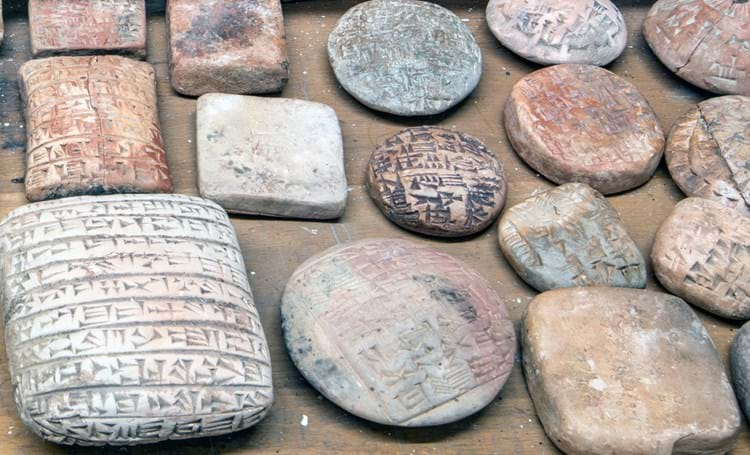The 190 clay tablets arrived at Heathrow airport from Bahrain and were due to be delivered to a private UK address in July 2019.
Border Force spotted them and sought advice from the British Museum. Experts in the department of the Middle East examined the photographs and objects.
In a statement the museum said: “Suspicions arose almost immediately as the ‘cuneiform’ tablets seemed to represent a virtually complete range of basic types known from ancient Mesopotamia. It was as if the whole genre of ancient Mesopotamian writing was represented in one shipment: an entire collection ready for a single uninformed buyer. But it was immediately clear that there was a problem - not one of the objects was ancient.”
Several indicators revealed the collection was recently made: although some of the inscriptions were correct, many were nonsense or upside down; they had all been fired deliberately and consistently and to a relatively high temperature; the clay itself was the wrong type; and the sizes and thicknesses of the tablets do not match those of the originals.
The museum said clay fakes like these have little monetary value but “if offered as a genuine collection to an unsuspecting buyer they would undoubtedly have been passed off as extremely valuable and given a price tag of thousands of pounds”.
It added that although faking tablets has been known for over 200 years, this is the first time that fakes of this particular type have been seen. The police and the museum believe this is a “new production line aimed at a fresh gullible market”.
Richard Nixon, Border Force Heathrow senior officer, said: “Organised crime gangs are usually the drivers behind the counterfeit trade and by making this seizure, our experienced officers have taken a substantial amount of money out of the hands of criminals. The links we have forged with experts at the British Museum were a vital part of this case and we will continue to work closely with them, as well as law enforcement partners, to stop counterfeit goods.”
Hartwig Fischer, director at the museum, said: “This is yet another example of positive collaboration, of organisations working together to crack down on harmful illegal trade.”







